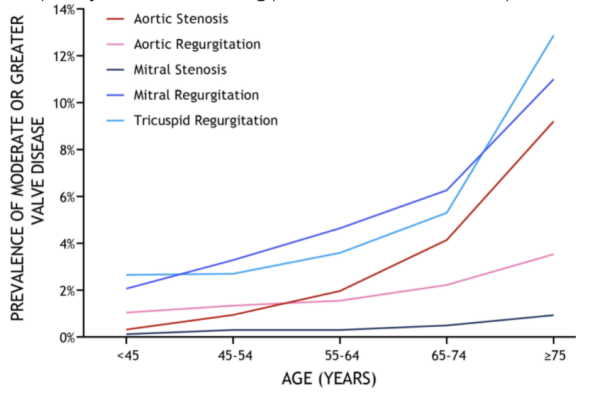
April 3, 2022 — egnite, Inc., an advanced technology digital health company focused on providing artificial intelligence solutions to help hospitals identify and manage their most at-risk cardiac patients, today announced new data that have the potential to help the clinical community better understand the impact of valvular heart disease (VHD) and the need for vigilance when screening and diagnosing patients. Results from the sponsored study, “Contemporary Prevalence of Valvular Heart Disease & Diagnostic Variability Across Centers,” have been published as an abstract in the Journal of the American College of Cardiology (JACC) and will be presented at the American College of Cardiology 71st Annual Scientific Session (ACC.22) on April 3, 2022.
An analysis was performed on data from over 714,000 patients (represented by over 929,000 de-identified echocardiographic reports) at 35 community and academic programs across the U.S. to evaluate the prevalence of aortic stenosis (AS), aortic regurgitation (AR), mitral stenosis (MS), mitral regurgitation (MR), and tricuspid regurgitation (TR). The data were sourced from the CardioCare platform, which includes a large dataset of echocardiographic reports that can offer insights into contemporary structural heart disease diagnosis and management in real-world practice settings.
Key findings demonstrated:
- Prevalence of VHD continues to be substantial and more common as patients age, with a noticeable increase above 65 years of age. TR and MR were the most common types of VHD observed.
- Prevalence of mixed VHD also increased with advancing age; the combination of MR and TR was the most common form of mixed valvular disease.
- Overall, VHD of moderate or greater severity was found to be more common among female patients versus male patients.
- Severe MR was more commonly diagnosed at centers that offer transcatheter mitral valve repair technologies (1.2% vs. 0.8%, p<0.0001).
“This is the first prevalence study out of one of the largest echo databases in the world, underscoring the potential for groundbreaking research from this tremendous resource. Our work expands by an order of magnitude the sample size and generalizability of previous work in a large contemporary cohort,” said J. Matthew Brennan, M.D., M.P.H., Associate Professor of Medicine, Interventional Cardiology, Duke University School of Medicine, and lead author of the study. “These data confirm the increasing prevalence of single valve disease among older patients are the first large-scale findings to demonstrate a nearly 1 in 20 prevalence of moderate or greater double valve disease, specifically MR/TR among older patients. It also suggests a greater prevalence of mitral and tricuspid disease among women with greater prevalence of aortic stenosis among men.”
VHD is a progressive and deadly condition that can occur when any valve in the heart is damaged or diseased. While timely diagnosis is critical to ensure this population of patients receive the treatment they need at the right time, the U.S. healthcare system is fragmented, which can cause delays in intervention that result in undertreatment or lack of timely treatment.
“These data provide important contemporary insights into understanding the impact of valve disease in the current era. While we must continue to focus on improving outcomes for aortic stenosis patients, the data highlight the urgent need for innovative therapies to treat patients with mitral regurgitation and tricuspid regurgitation as well as patients with mixed valvular disease,” said Glenn R. Barnhart, M.D., Chief Medical Officer of egnite. “This analysis represents egnite’s commitment to closing the gaps in patient care that prevent timely diagnosis and treatment. We are grateful to Dr. Brennan and the other study authors for leading this effort and making this analysis possible.”
For more information: www.egnitehealth.com


 July 31, 2024
July 31, 2024 








